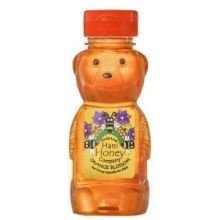When you think of natural sweetness, Honey instantly comes to mind. This golden delight has been cherished for centuries, not just for its taste but also for its health benefits and versatility. Alongside this, the beauty of honeycomb cannot be ignored. It represents the purest form of honey, straight from the hive, and is a testament to nature’s artistry.
Honey isn’t just a pantry staple; it’s a symbol of purity, wellness, and craftsmanship. Whether you enjoy it drizzled over pancakes, mixed in tea, or paired with cheese, honey always adds that perfect touch of sweetness. But what makes honey so special, and why is it loved across the globe? Let’s dive into everything you need to know.
What Exactly is Honey?
Honey is a natural sweet substance made by bees using nectar collected from flowers. The process of making honey is fascinating. Bees gather nectar, store it in their honey stomachs, and pass it along to other worker bees. Through evaporation and enzymatic activity, the nectar transforms into the golden syrup we call honey.
The beauty of honey lies in its variety. Depending on the flowers bees visit, honey can have different flavors, colors, and aromas. From light, floral notes to bold, earthy tones, honey offers a flavor profile for every palate.
Why Honey is Considered a Superfood
Honey isn’t just sweet; it’s packed with nutrients and antioxidants. It contains enzymes, vitamins, and minerals that make it far more than just a sugar substitute. Its antimicrobial properties help soothe sore throats, heal wounds, and even improve digestion.
Unlike refined sugar, honey provides natural energy without the crash. Athletes often use it as a quick energy boost because it’s easily digestible. Plus, it helps regulate blood sugar levels better than artificial sweeteners.
The Beauty of Honeycomb
If honey is the star, honeycomb is the crown jewel. Honeycomb is the hexagonal wax structure bees build to store honey and pollen. When you bite into honeycomb, you experience honey in its purest, most natural form.
Eating honeycomb is like tasting nature’s art. It provides a chewy texture along with a burst of honey’s sweetness. Many people enjoy honeycomb on toast, with fruits, or as a topping for cheese boards. It’s a gourmet experience that adds charm to any table.
How Honey is Collected and Processed
The journey from hive to jar is both delicate and fascinating. Beekeepers carefully harvest honey by removing frames from the hive. The honeycomb is uncapped, and the honey is extracted using a centrifuge. After filtering out impurities like wax and pollen, the honey is ready for packaging.
Some people prefer raw honey because it retains all its natural enzymes and nutrients. Unlike pasteurized honey, raw honey may contain small bits of pollen and wax, making it more wholesome.
Different Types of Honey and Their Uses
Not all honey is created equal. Here are some popular varieties:
-
Wildflower Honey: Made from a mix of wildflower nectar, it has a rich and complex flavor.
-
Clover Honey: Light and mild, perfect for sweetening drinks.
-
Manuka Honey: Famous for its medicinal properties, often used for healing.
-
Acacia Honey: Delicate and slow to crystallize, great for drizzling.
Each type of honey serves a different purpose, from culinary use to skincare and health remedies.
Honey in Everyday Life
Honey is more than a sweetener. It’s a versatile ingredient that can be used in countless ways:
-
In Beverages: Add honey to your tea, coffee, or smoothies for natural sweetness.
-
For Cooking: Use it in glazes, marinades, and baked goods.
-
For Skincare: Honey masks are known for their moisturizing and antibacterial properties.
Its versatility makes it a favorite in both kitchens and beauty routines.
Honeycomb in Culinary Creations
Honeycomb adds a unique texture and aesthetic appeal to dishes. Chefs love to use honeycomb as a topping for desserts, cheese platters, and even cocktails. Its chewy texture and raw sweetness provide an unmatched sensory experience.
If you want to impress guests, place a small piece of honeycomb on a charcuterie board. Pair it with sharp cheeses, nuts, and fresh fruits for a perfect blend of flavors.
The Cultural and Historical Importance of Honey
Honey has been a part of human history for thousands of years. Ancient civilizations valued honey not only as food but also as medicine and an offering to gods. It was used in traditional remedies and beauty treatments across cultures.
In some cultures, honey is still a symbol of prosperity and happiness. It’s often included in wedding ceremonies and festive meals.
How to Store Honey Properly
One of the best things about honey is its long shelf life. Properly stored honey can last indefinitely without spoiling. Keep it in a sealed container at room temperature, away from moisture and direct sunlight.
If your honey crystallizes, don’t worry! It’s a natural process. Simply place the jar in warm water to return it to its liquid state without losing its properties.
Why You Should Choose Natural Honey
When buying honey, always opt for natural, unadulterated honey. Many commercial brands mix honey with sugar syrups or process it excessively, removing beneficial enzymes. Look for raw or minimally processed honey for maximum health benefits.
Natural honey not only tastes better but also supports local beekeepers and sustainable practices. By choosing pure honey, you contribute to preserving bee populations and promoting biodiversity.
Final Thoughts on Honey and Honeycomb
Honey is nature’s gift—a perfect blend of taste, health, and tradition. From drizzling it over breakfast to savoring a piece of honeycomb on a cheese platter, there are endless ways to enjoy it. Embrace honey in its purest form and make it a part of your daily life.
